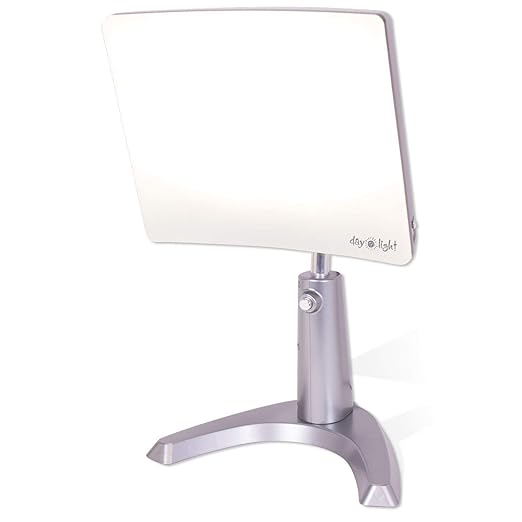Shifts in the number of daylight hours—due to changing seasons or long-distance travel—can have varying effects on people. For some, limited light hours saps their energy. But for others, the effects can be more serious. After doing 29 hours of research, including reading two books and five comprehensive studies on the subject and interviewing one of the scientists who discovered seasonal affective disorder (SAD) , we found we would use the Carex Day-Light Classic Plus Lamp
, we found we would use the Carex Day-Light Classic Plus Lamp  to treat SAD symptoms
to treat SAD symptoms .
.
 |
Carex Day-Light Classic Plus Lamp
|
This Carex lamp meets all of the criteria necessary to be considered therapeutically effective and safe, and it’s cheaper than many of its competitors. The lamp’s 99.3 percent UV-free light and 10,000-lux light intensity, combined with its large, 250-square-inch face, mean you won’t have to sit in front of it for more than 30 minutes (the minimum length of time that experts recommend) to experience its physiological benefits. For several years, it was the top recommendation by the Center for Environmental Therapeutics, a nonprofit collective of scientists and clinicians dedicated to research and education about environmental therapies.
meets all of the criteria necessary to be considered therapeutically effective and safe, and it’s cheaper than many of its competitors. The lamp’s 99.3 percent UV-free light and 10,000-lux light intensity, combined with its large, 250-square-inch face, mean you won’t have to sit in front of it for more than 30 minutes (the minimum length of time that experts recommend) to experience its physiological benefits. For several years, it was the top recommendation by the Center for Environmental Therapeutics, a nonprofit collective of scientists and clinicians dedicated to research and education about environmental therapies.
 |
| Northern Light Technologies Boxelite Desk Lamp More streamlined, warmer hue |
Of all of the light therapy lamps we considered, the Boxelite has the most unobtrusive design.
If you’re willing to pay a bit more for the sleekest light therapy lamp we looked at, or if our pick is unavailable, we recommend the Northern Light Technologies Boxelite Desk Lamp . With a minimalist, square design, the Boxelite is the lamp we’d like to put on our own desks. It has a large light face, which provides 10,000 lux of UV-free light at 14 inches (a farther distance than both our top pick and runner-up). The Boxelite also has a warmer color temperature (3,500 Kelvin) than our other picks, which may better suit your taste. But the Boxelite isn’t adjustable, unlike the Day-Light Classic Plus and the HappyLight, and it doesn’t have the endorsement that our main pick did.
. With a minimalist, square design, the Boxelite is the lamp we’d like to put on our own desks. It has a large light face, which provides 10,000 lux of UV-free light at 14 inches (a farther distance than both our top pick and runner-up). The Boxelite also has a warmer color temperature (3,500 Kelvin) than our other picks, which may better suit your taste. But the Boxelite isn’t adjustable, unlike the Day-Light Classic Plus and the HappyLight, and it doesn’t have the endorsement that our main pick did.
Disclaimer: This guide is not a replacement for an official diagnosis of SAD by a physician. While many of us might catch a case of the blahs when the weather gets colder and the days longer, that’s far different from a clinical case of SAD, which should only be diagnosed and treated by a medical professional. (See below for more on these differences.) You should use a SAD lamp or light box only under medical supervision, as it is, in fact, a medical device.
No comments:
Post a Comment